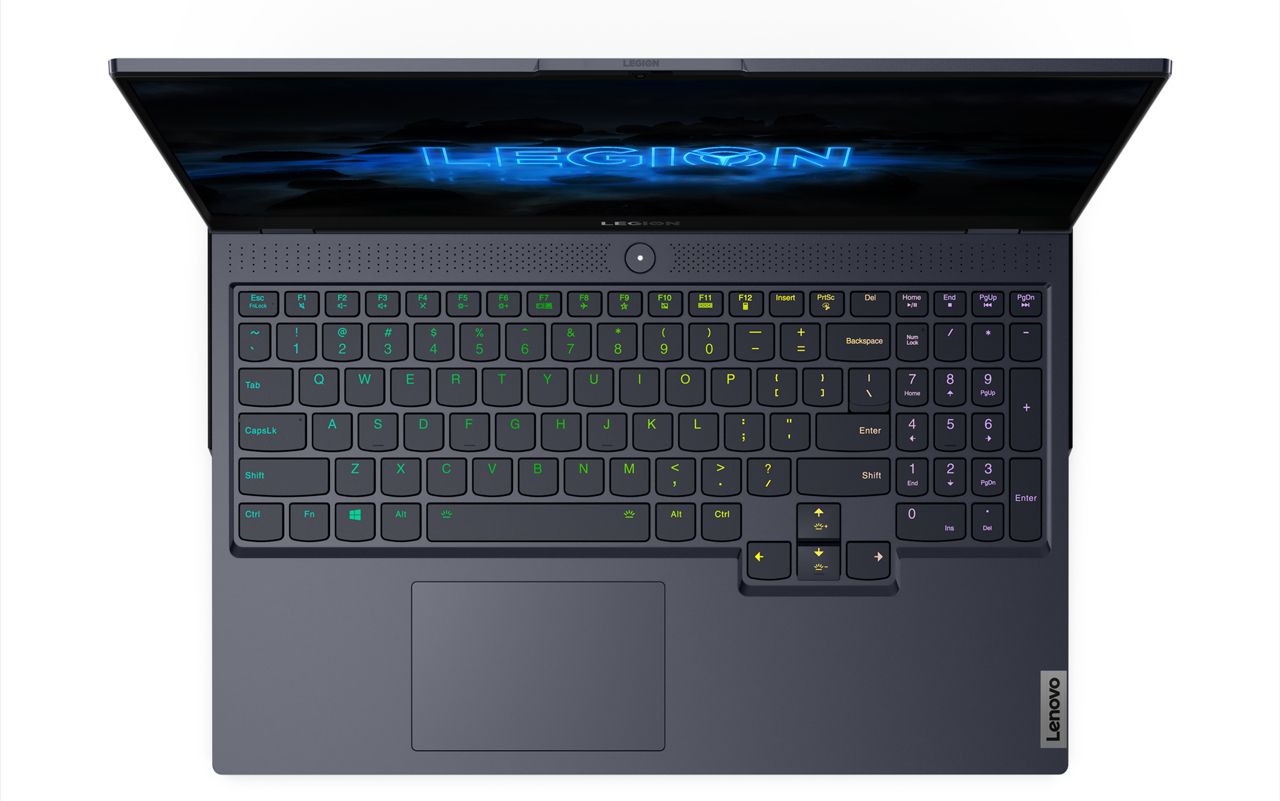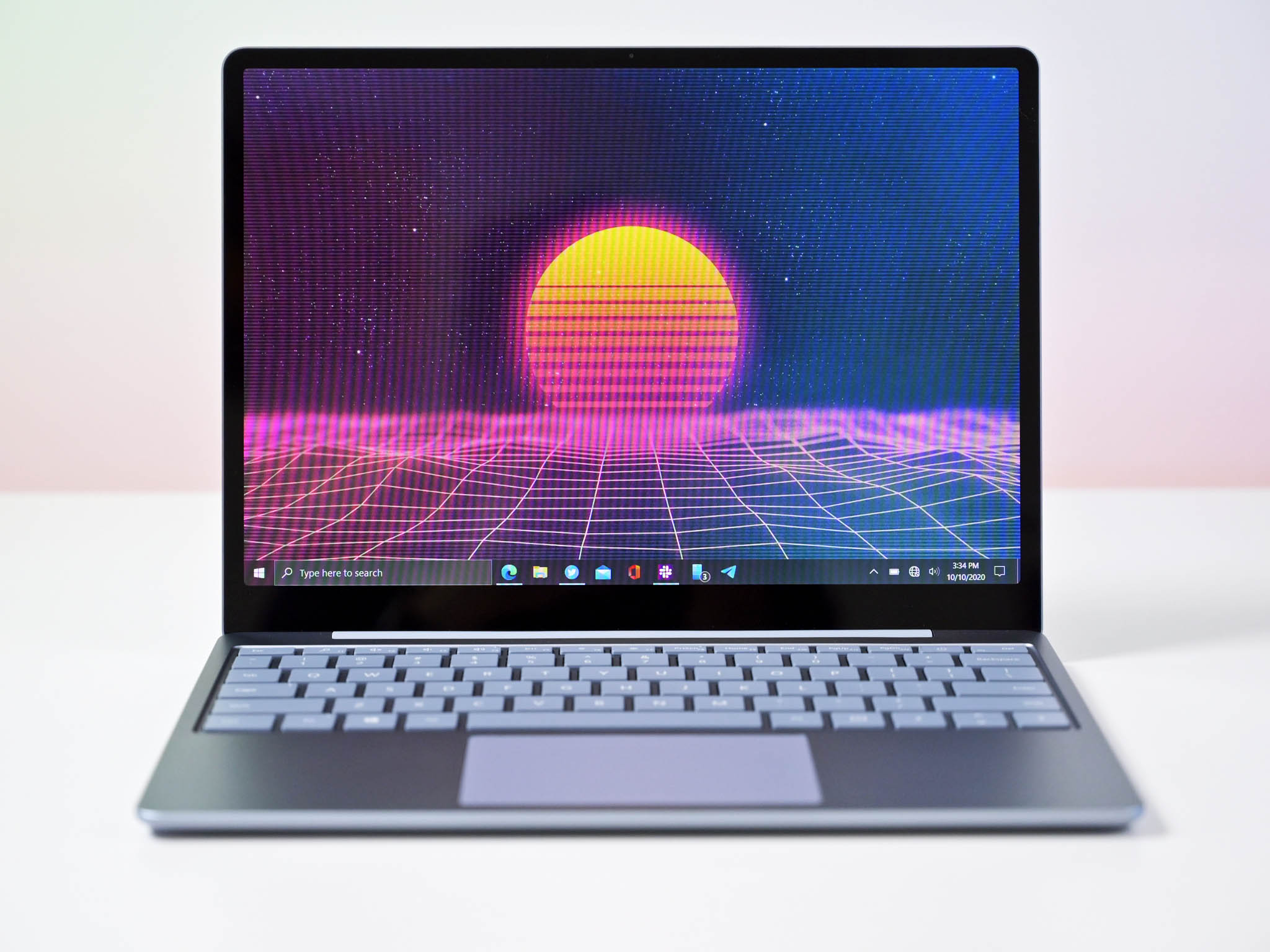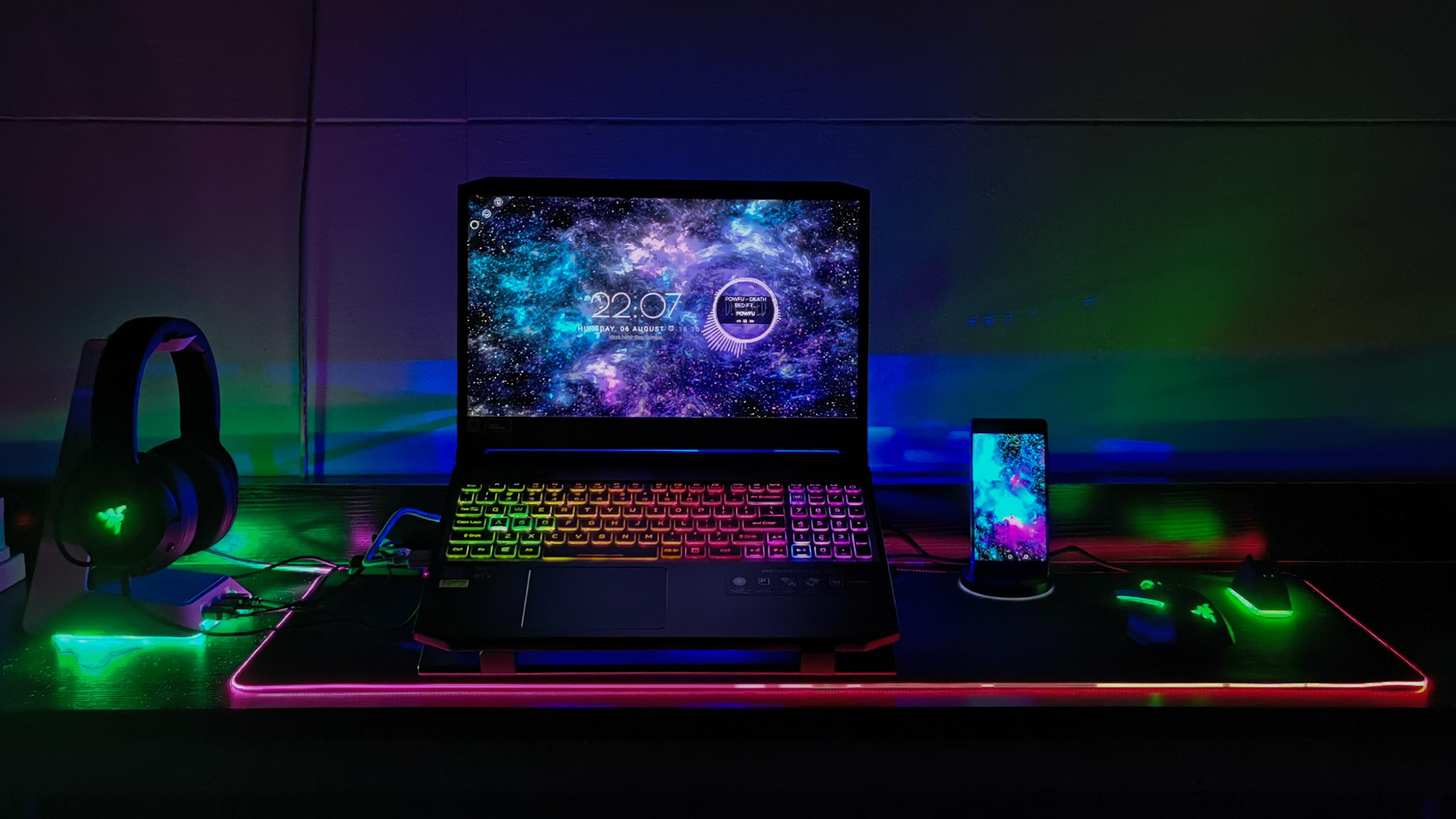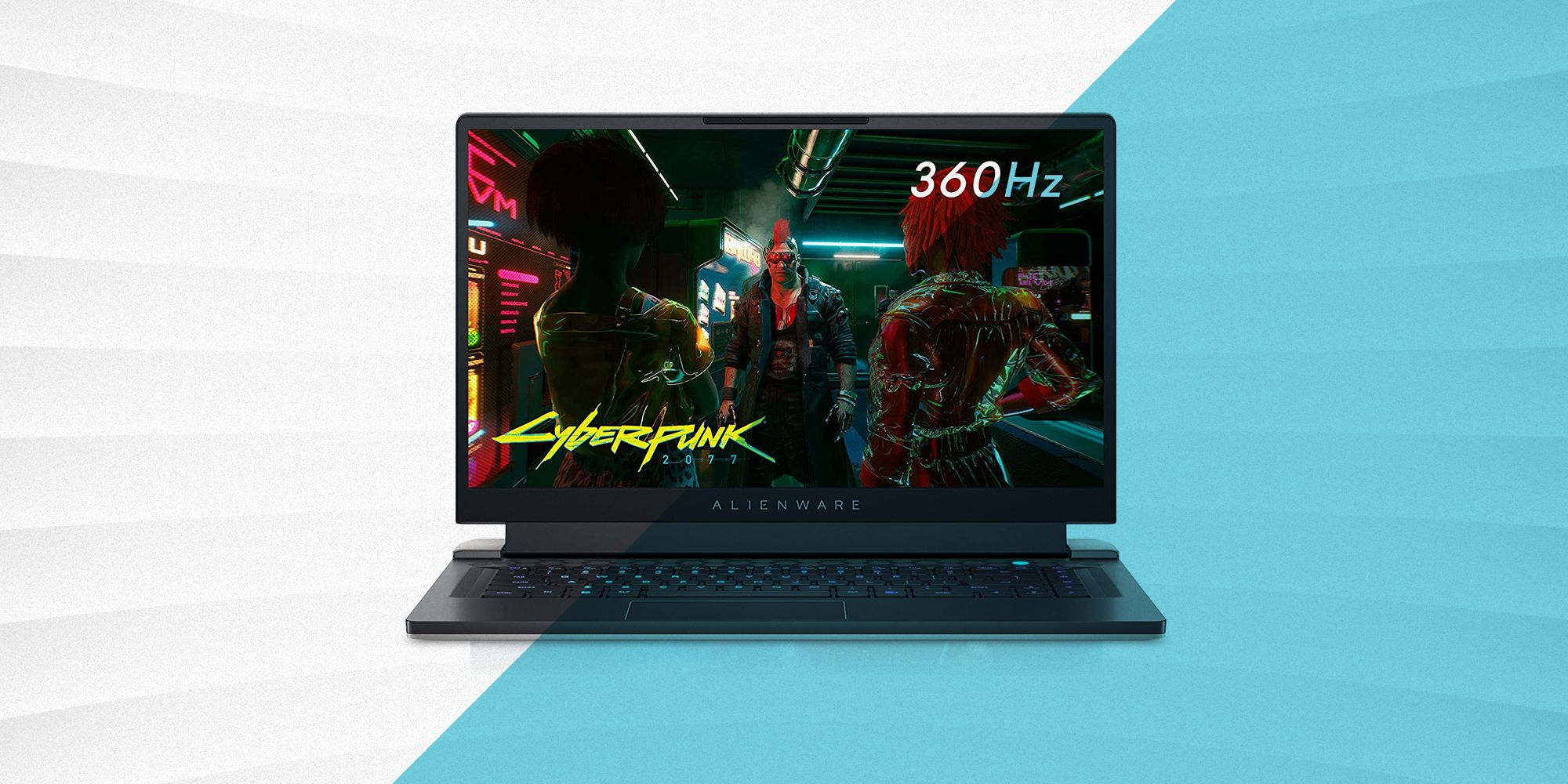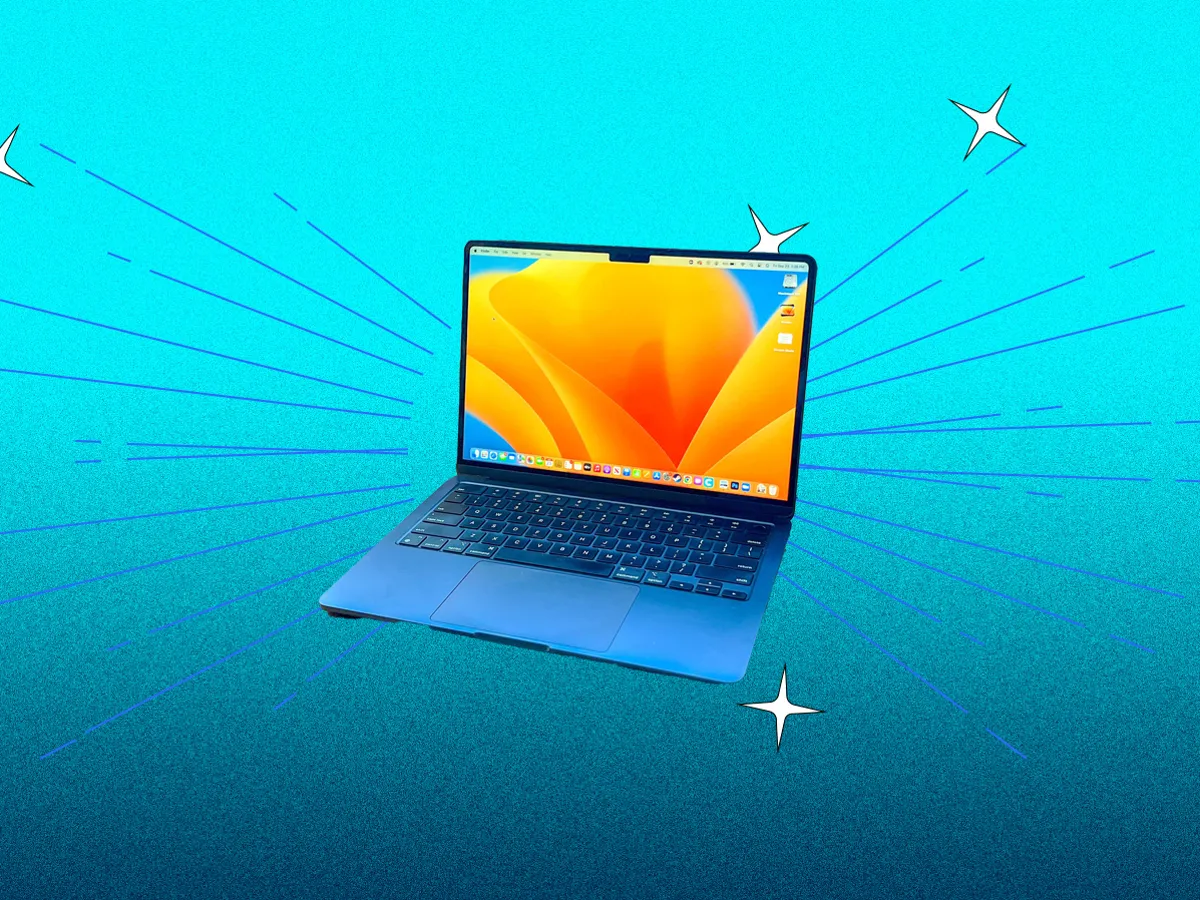Introduction
Gaming laptops are a popular choice for gamers due to their portability and powerful performance. However, one of the most frustrating issues that can arise with a gaming laptop is a malfunctioning keyboard. Whether it’s unresponsive keys, sticky buttons, or a completely non-functional keyboard, these problems can severely impact your gaming experience. Thankfully, there are several steps you can take to fix a Windows 10 gaming laptop keyboard.
In this article, we will guide you through a series of troubleshooting methods to help you get to the root of the problem and resolve it. From simple cleaning techniques to driver updates and even system restoration, we will cover a range of solutions that can help you fix your laptop’s keyboard issues.
Before we dive into the troubleshooting steps, it’s important to note that not all keyboard problems can be fixed. If your laptop’s keyboard is physically damaged, you may need to replace it entirely. However, don’t worry just yet! Many keyboard issues can be resolved with software tweaks and maintenance.
So, if you’re ready to get your gaming laptop’s keyboard back in top shape, let’s get started with the troubleshooting process!
Step 1: Troubleshooting the Keyboard Issues
When faced with keyboard issues on your Windows 10 gaming laptop, the first step is to troubleshoot the problem to identify the underlying cause. Here are some common troubleshooting techniques:
- Restart your laptop: Sometimes, a simple restart can fix minor software glitches that may be causing the keyboard problem. Press the Windows key, click on the power icon, and select “Restart” to reboot your laptop.
- Check for updates: Ensure that your operating system and drivers are up to date. Go to “Settings” by pressing Windows key + I, click on “Update & Security,” and select “Check for updates.” Install any available updates and restart your laptop if required.
- Scan for malware: Viruses or malware can interfere with the proper functioning of your keyboard. Use a reliable antivirus software to scan your laptop and remove any potential threats.
- Use the on-screen keyboard: If your physical keyboard is unresponsive, you can use the on-screen keyboard as a temporary workaround. Press the “Windows” key + “Ctrl” + “O” to open it. If the on-screen keyboard works fine, then there might be an issue with your physical keyboard.
By following these initial troubleshooting steps, you can often identify and resolve the simpler keyboard issues. However, if the problem persists, it’s time to move on to the next steps to fix your Windows 10 gaming laptop keyboard.
Step 2: Cleaning the Keyboard
One of the common causes of keyboard issues on a Windows 10 gaming laptop is dirt, dust, or debris that may have accumulated underneath the keys. Cleaning the keyboard can often resolve these problems. Here’s how you can clean your laptop’s keyboard:
- Disconnect the laptop from power: Before you begin cleaning, make sure your laptop is turned off and unplugged from any power source.
- Prepare cleaning supplies: You will need a soft, lint-free cloth and isopropyl alcohol or a mild cleaning solution. Avoid using harsh chemicals or excessive moisture.
- Gently wipe the keys: Dampen the cloth with a small amount of cleaning solution or isopropyl alcohol. Lightly wipe the keys in a gentle circular motion to remove any dirt or grime. Take care not to apply excessive pressure as it may damage the keys.
- Clean between the keys: Use a can of compressed air or a small, clean brush to remove any debris that may be trapped between the keys. Gently blow the air or brush through the gaps to dislodge any particles.
- Let it dry: Allow the keyboard to air dry for a few minutes before turning on your laptop.
After completing these steps, turn on your laptop and check if the keyboard is functioning properly. Cleaning the keyboard can often resolve minor issues caused by dirt or debris. If the problem persists, don’t worry; we have more troubleshooting steps to try.
Step 3: Disabling and Enabling the Keyboard Driver
If your Windows 10 gaming laptop keyboard is still not functioning correctly after cleaning it, you may need to disable and enable the keyboard driver. This process can help resolve driver-related issues that might be causing the problem. Here’s how you can do it:
- Open the Device Manager: Press the Windows key + X and select “Device Manager” from the menu.
- Expand the “Keyboards” category: Click on the arrow next to “Keyboards” to expand the category and reveal the list of keyboards connected to your laptop.
- Right-click on the keyboard driver: Locate your laptop’s keyboard driver from the list, right-click on it, and select “Disable device.” Confirm the action if prompted.
- Enable the keyboard driver: After disabling the keyboard driver, right-click on it again and select “Enable device.” This will re-enable the driver.
Once you have disabled and re-enabled the keyboard driver, check if the issue is resolved. If not, proceed to the next step for further troubleshooting.
Step 4: Updating the Keyboard Driver
If disabling and enabling the keyboard driver didn’t fix the issue, the next step is to update the keyboard driver. Outdated or incompatible drivers can often cause keyboard problems on a Windows 10 gaming laptop. Updating the driver can help resolve such issues. Follow these steps to update the keyboard driver:
- Open the Device Manager: Press the Windows key + X and select “Device Manager” from the menu.
- Expand the “Keyboards” category: Click on the arrow next to “Keyboards” to expand the category and reveal the list of keyboards connected to your laptop.
- Right-click on the keyboard driver: Locate your laptop’s keyboard driver from the list, right-click on it, and select “Update driver.”
- Choose the update method: In the Update Driver window, select “Search automatically for updated driver software.” Windows will search online for the latest driver for your keyboard.
- Follow the on-screen instructions: If Windows finds an updated driver, it will begin the installation process. Follow the on-screen prompts to complete the update. If the system indicates that the driver is already up to date, try the “Browse my computer for drivers” option to manually select and install a compatible driver.
Once the driver update is complete, restart your laptop and test the keyboard to see if it is functioning properly. If the issue persists, don’t worry; there are more steps to troubleshoot your Windows 10 gaming laptop keyboard.
Step 5: Checking for Hardware Issues
If you have followed the previous steps and your Windows 10 gaming laptop keyboard is still not working properly, it’s time to check for any potential hardware issues. Here’s what you can do:
- External keyboard: Connect an external USB keyboard to your laptop and check if it works. If the external keyboard functions correctly, it indicates that there might be a hardware problem with your laptop’s keyboard specifically.
- Hardware inspection: Check the physical condition of your laptop’s keyboard. Look for any signs of damage, such as loose keys or visible liquid spills. If you notice anything unusual, it might be necessary to seek professional assistance to repair or replace the keyboard.
- Keyboard connector: Ensure that the keyboard connector is properly connected to the motherboard. In some cases, the connector might get loose over time, resulting in keyboard malfunctions. Gently unplug and re-plug the connector to ensure a secure connection.
- Hardware diagnostics: Use the built-in hardware diagnostics tool on your laptop to check for any other hardware issues. Restart your laptop and press the appropriate key (usually F2 or Del) during startup to access the diagnostics menu. Follow the on-screen instructions to perform the hardware tests.
By performing these hardware checks, you can identify any potential issues that may be causing the keyboard malfunction. If you determine that there is indeed a hardware problem, it might be necessary to consult a professional technician for further assistance and possible repairs.
However, if the hardware checks do not reveal any issues and your laptop’s keyboard is still not working properly, try the next troubleshooting steps to resolve the problem.
Step 6: Performing a System Restore
If you’re still experiencing keyboard issues on your Windows 10 gaming laptop, performing a system restore can help resolve any software-related problems that may be causing the malfunction. System restore allows you to revert your laptop’s settings to a previous state when the keyboard was functioning correctly. Here’s how you can perform a system restore:
- Open the System Restore: Press the Windows key + R to open the Run dialog box. Type “rstrui” and press Enter to launch the System Restore utility.
- Select a restore point: In the System Restore window, select “Choose a different restore point” and click Next.
- Choose a restore point: From the list of available restore points, select a date and time when your keyboard was working properly. Click Next to proceed.
- Confirm the restore: Review the details of the selected restore point and click Finish to start the restoration process. Note that system restore will restart your laptop during the process.
- Wait for the process to complete: Let the system restore process run its course. Your laptop will restart once the restoration is complete.
After the system restore is finished and your laptop boots up, check if the keyboard is now functioning correctly. System restore can often resolve software conflicts or misconfigurations that may have caused the keyboard issues.
If the keyboard problem persists, don’t worry, there’s still one more troubleshooting step to try before considering more drastic measures.
Step 7: Reinstalling the Operating System
If all previous steps have failed to fix the keyboard issues on your Windows 10 gaming laptop, reinstalling the operating system can be a last resort. This step will completely erase your laptop’s data and install a fresh copy of the operating system, which can help resolve any deep-rooted software problems. Here’s how you can reinstall the operating system:
- Backup your important data: Before proceeding with the reinstallation, make sure to backup all your important files and data. You can do this by transferring them to an external storage device or uploading them to a cloud service.
- Create a Windows 10 installation media: Download the Windows 10 installation files from the official Microsoft website and create an installation media, such as a USB drive or DVD, using the Windows 10 Media Creation Tool.
- Boot from the installation media: Insert the installation media into your laptop and restart it. During startup, press the appropriate key (usually F12 or Del) to access the boot menu. Select the installation media as the boot device.
- Follow the on-screen instructions: The Windows 10 installation process will begin. Follow the on-screen prompts to proceed with the installation. When prompted, select the “Custom Installation” option to perform a fresh installation of the operating system.
- Format the system drive: During the installation process, you will have the option to format your laptop’s system drive. Make sure to select the appropriate drive and choose the format option to completely erase the old operating system.
- Complete the installation: Once the formatting is complete, the installation will continue. Follow the remaining on-screen instructions, such as selecting language preferences and creating a new user account.
After the operating system reinstallation is finished and your laptop reboots, check if the keyboard is now working properly. Reinstalling the operating system can often resolve deep-seated software issues that were causing the keyboard problems.
If, despite reinstalling the operating system, the keyboard issues persist, it may be time to consult a professional technician for further assistance or consider replacing the laptop’s keyboard.
Conclusion
Dealing with a malfunctioning keyboard on your Windows 10 gaming laptop can be frustrating, but with the troubleshooting steps outlined in this guide, you can get your keyboard back in working order. Whether it’s a software glitch, dirt and debris, or a driver issue, there are several solutions to try.
We started by troubleshooting the keyboard issues through simple steps such as restarting the laptop, checking for updates, and scanning for malware. If those steps didn’t solve the problem, we moved on to more specific solutions.
Cleaning the keyboard is a crucial step as dirt and debris can cause keys to become unresponsive or sticky. Disabling and enabling the keyboard driver, as well as updating it, can address any driver-related issues.
If the problem persists, it’s important to check for hardware issues by connecting an external keyboard, inspecting the physical condition of the laptop’s keyboard, and ensuring a secure connection between the keyboard and the motherboard. Running hardware diagnostics can also help identify any underlying hardware problems.
If all else fails, performing a system restore can revert your laptop’s settings to a previous state when the keyboard was functioning properly. And as a last resort, reinstalling the operating system can help resolve any deep-seated software issues.
Remember to always backup your important data before attempting any troubleshooting, especially before reinstalling the operating system.
If you have followed all the steps outlined in this guide and your keyboard still isn’t working, it might be time to seek professional assistance or consider replacing the laptop’s keyboard.
By following these troubleshooting steps, you can save time and money by resolving keyboard issues on your Windows 10 gaming laptop yourself. So go ahead, try these solutions, and get back to enjoying your gaming experience without any keyboard troubles.







